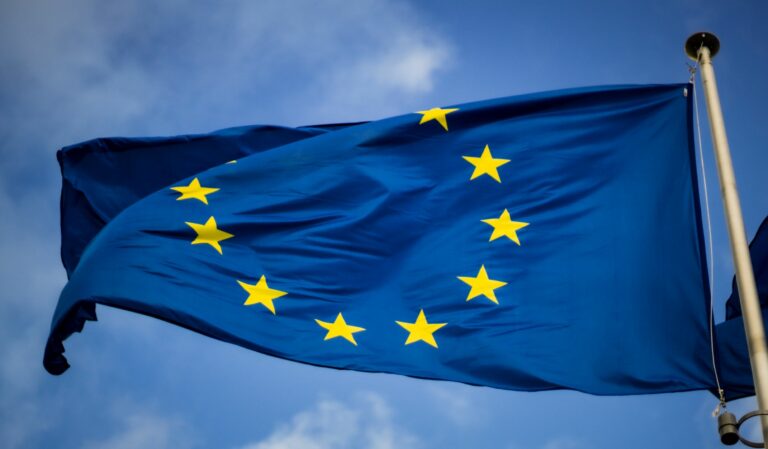The concept of Open Banking came about as an answer to EU regulations meant to increase competition within Europe’s financial sector. Its purpose is to create an integrated market where transactions are faster, safer, and completely digital. One reasons these regulations were necessary is levelling the playing field against the monopolies that exist between big banks and the major payment processors. In this blog, we explore what Open Banking means for innovative new entrants to the financial sector and the challenges they face.
Open Banking and European PSD2 objectives
The term ‘Open Banking’ refers to the second Payment Services Directive (PSD2), a revised version of EU regulations for payment services. The European Union’s goal in implementing the PSD2 is to open the financial market to more competition. A common methodology for cooperative data exchange that ought to be a result of the directive would be a boost to the strength of the entire European market.
The objective of the PSD2, which has been in force since 2015, is an integrated European market where pan-European transactions can be done safer and faster. In addition to improving the safety of online transactions, the guidelines are also intended to promote far-reaching developments in digital banking. PSD2 is intended to create more room for banking services that are digital only. Or offered online, so there is no need for customers to have to visit the bank offices.
In order to do all of that, financial services providers will need to migrate to more open business models and relax their rules for access to customer data and services. One way to do this is by using open APIs, hence the term ‘open banking.’
An open and digital banking market for everyone
In many countries, the big banks and transaction processing providers have been able to create monopolies that earn them enormous amounts of money for processing monetary transactions. They can make even more money by delaying those transactions. However, with today’s technology, there is no legitimate reason for holding a client’s money for days after a transaction request. One of the goals of the PSD2 is to allow customers to transfer money in real time between any bank in the European Union.
Now the big banks are required to allow third-party access to their clients’ accounts for the initiation of transactions. Consequently, there are many new opportunities in the market for developing new tools and applications that can serve customers better. And moreover – reduce the cost of banking services.
The additional access also makes it easier for customers to choose an online-only bank for their normal, day-to-day financial activities. Such as: receiving their salary, automatic payments for bills, and even for short-term loans. Until now, these types of daily financial transactions were only available through the big traditional banks.
Banks vs. new market entrants
Now digital banking is becoming much more available and mainstream. Hence the number of competitors offering niche solutions for banking and other financial services is growing by leaps and bounds. Many of these new entrants have been able to build a strong customer base by offering innovative specialty services. Their advantage over the traditional banks is that they are unhampered by any need to provide a full range of financial services. Also, they can focus strictly on services that offer the most profitability.
At the same time the big banks are moving fast to transition their own service offerings. Their power to become serious contenders in the disruption should not be underestimated. They have the kind of financial resources that most new entrants do not. Their brand value and connection with the customer are also often still very strong. Not only that, but they have very large IT departments that they can quickly set to work on developing new services that are attractive enough to retain their customers’ loyalty.

The lack of a common methodology
An integrated market for all of Europe is certainly a commendable goal. Yet the support for the PSD2 was not unanimous. The large, more traditional banks are the ones that take the most issue with the regulations. That is not surprising when you understand that it is their monopolies that are meant to be broken up under the new rules. Others have argued against the directive because of the risks involved in allowing consumers fast and easy access to loans before adequate consumer protection laws are in place.
But aside from all of that, probably the biggest challenge for the success of the PSD2 is the lack of a common methodology for sharing information and data. The regulation dictates only what needs to happen. It offers no guide for how it should happen. Without unified guidelines for common methodologies and agreements, every bank is free to define its own individual solution.
In essence, this allows banks the ‘wiggle room’ to make access to their client information within their domain so complex that it effectively blocks new market entrants and keeps the existing monopoly intact. Meanwhile, the open connections for data exchange are themselves not entirely without risks. There is always the possibility that some of the solutions on offer will contain serious cybersecurity issues.
The evolution of APIs in Open Banking
We are currently seeing new companies being formed, providing connection solutions to the banks individually. To respond to the lack of standardisation. Eventually, these companies will probably be able to offer (for a fee) APIs that can connect many of the European banks with each other. The costs, however, have so far been too high to be a real option for opening up the ‘unlimited possibilities’ associated with online services. Most are built on fees per transaction, which can quickly become prohibitively expensive at volume.
Without some basic level of conformity and consistency, we could see as many solutions as there are companies implementing them. The lack of standardisation also increases the cost of every integration. This is perhaps the greatest threat to a successful Open Banking system in Europe.
Consumers want fast digital banking and privacy
The Open Banking system is meant to allow banks to immediately and systematically deliver customer information to third parties through open APIs. At the same time, privacy regulations (GDPR) have made consumers the owners of their own data. This means that a bank customer’s personal information cannot be bought from or sold to third parties without their permission.
The GDPR creates therefore a real challenge for Open Banking. New, younger generations have expectations that are completely different from their predecessors’ and everything must be incredibly fast. If an answer is not available immediately, they move on to something else.
When these new customers look for financial services, they want a clear offer within seconds. In that extremely short period of time, the financial services provider must determine who they are, what they want exactly, what their background is, whether they are reliable, and the size of the risk of doing business with them. In other words, nearly the entire KYC process needs to happen in real time. The only way that can happen is through incredibly fast data sharing between multiple financial services companies.
What does all this mean for the future of digital banking?
PSD2 is an excellent regulatory solution that will mean a stronger market for the entire EU. Unfortunately, the lack of standardisation will extend the time it takes to reach that goal. I wouldn’t be surprised if we need to wait 5 to 10 years before reputable organisations are providing real, workable solutions for the entire market. Until then, solutions will likely remain predominately regional, with products and services for local methods rather than pan-European application.
Specifically, one of the biggest challenges will most likely be in the authentication process. Since rules and regulations still vary by country and region. Here the task for the European Union is to find a collective solution to the authentication process. So that data sharing between financial services providers can be both faster and safer.
As an international specialist in software solutions specifically for the financial services sector, Aptic has comprehensive knowledge of the online payment processes in Europe and elsewhere. Every market and every country is unique in the specific rules and regulations that apply to the financial sector, for both the KYC information requirements and access methods. Aptic works with regional experts to ensure the best, safest and most reliable integrations for Open Banking and PSD2. We prefer to work with open APIs so that we can also ensure the integrations are future-proof.
Open Banking is one of the trends in modern business financing that we discuss in our latest whitepaper. If you would like to know more about this and other trends, download the whitepaper “Trends & Tools in Modern Business Financing” below.
You are, of course, also welcome to contact me through the contact information below.
